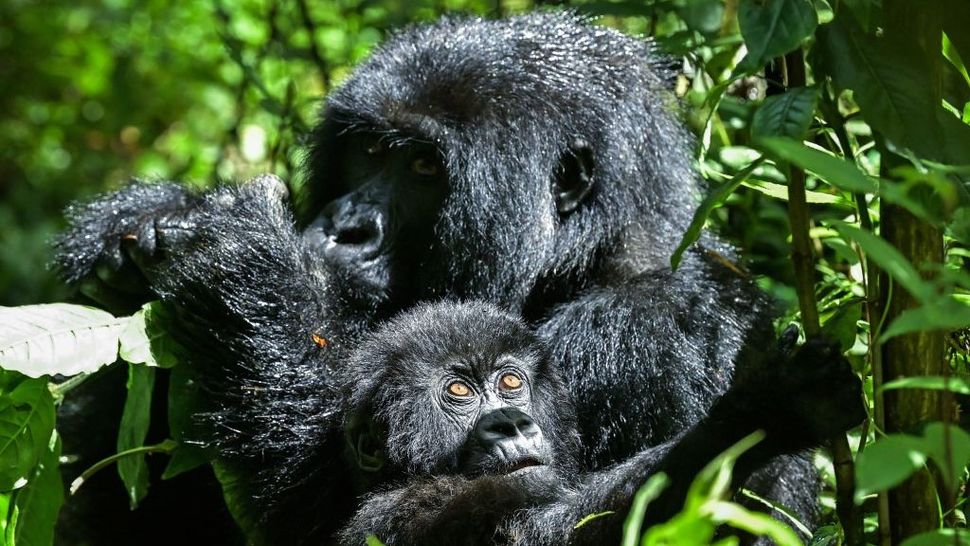Adoptions in the animal kingdom may provide an evolutionary edge, but additional factors like empathy, the innate drive to care for infants, and inexperience might also play a role.
Adoption is common among humans, who may decide to raise someone else’s child for a range of reasons, including fertility struggles or the wish to provide a home for youngsters in need.
But why do animals sometimes adopt the young of others? The act of caring for an unrelated, parentless infant probably emerged because it confers an evolutionary advantage on the foster parent, said Michael Weiss, a behavioral ecologist and research director at the Center for Whale Research in Washington state. For example, adoption may provide valuable caregiving experience for females that lack offspring and increase their future young’s survival chances, Weiss told Live Science.
Adoptions can occur within the same species or, in some extremely rare and puzzling cases, between different species. In a 2021 study in the journal eLife, researchers examined the effects of maternal loss on young mountain gorillas (Gorilla beringei beringei) and found that orphans over age 2 forged relationships with other group members, especially with dominant males.
“A young gorilla would usually share its nest at night with its mother, but if the mother dies or leaves the group, then it will share a nest with the dominant male,” study lead author Robin Morrison, a behavioral ecologist at the University of Zurich and an affiliate scientist with the Dian Fossey Gorilla Fund in Rwanda, told Live Science.
Mountain gorillas live in social groups composed of a dominant male and several females with their offspring. Regardless of whether the dominant male fathered the infants, his role is to protect the next generation from infanticide at the hand of rival males. His ability to do so may determine his reproductive success, Morrison said.

“Males that are really good at caring for offspring and do this in front of females are the most popular,” she explained. Looking after an orphaned gorilla could earn a dominant male brownie points, thus increasing his chances of mating and of passing on his genes. “It’s part of demonstrating their reproductive quality,” Morrison said.
While the females in the group don’t necessarily benefit from raising a motherless juvenile, doing so does not come at great energetic cost because infants over age 2 can forage by themselves, Morrison said. “It’s also good for the other young gorillas to have a playmate,” she added, as it enhances their social skills.
Social bonds and baby obsession
Adoption is also common in other primates and can bridge social groups. In a 2021 study published in the journal Scientific Reports, researchers documented the first known case of great apes adopting infants from a separate group. The team observed two female wild bonobos (Pan paniscus) that appeared to have adopted two infants from another group and posited that the behavior may boost the adults’ social status.
“One possibility is that adoptees could become future allies of the adoptive mothers,” the researchers wrote in the study. “Both adoptees were females and female bonobos form strong social bonds and coalitions within their group and sometimes across groups.”
Another possibility is that, like humans, female bonobos feel empathy and a fascination with infants, according to the study. “Within primate species, some adults are really baby-obsessed,” Morrison said, adding that this zeal can lead to kidnappings and death if the infant is caught in a commotion.

Researchers described the kidnapping of a 3-week-old Tibetan macaque (Macaca thibetana) by a female of the same species in a 2023 study published in the journal Primates. The female had two offspring of her own when she snatched the baby from its mother, including a 1-month-old that she continued to nurse alongside the captive. The kidnapping-turned-adoption may have benefited the female by invoking future social support or favors, such as grooming, the researchers suggested.
The kidnapping of a 5-day-old yellow baboon (Papio cynocephalus), described in a 1987 study in the American Journal of Primatology, had a less-happy ending: The infant died of starvation or dehydration after a high-ranking female abducted it and carried it around for three days.
Underwater adoption
Nonhuman primates may feel the same caring instincts as humans do when we see a baby or small animal, which may help to explain these behaviors, Morrison said. And it’s not just primates, according to Weiss, who studies orcas (Orcinus orca) in the waters around the Pacific Northwest and western Canada.
“All of the females, and especially the females who haven’t had a calf yet, are totally baby-obsessed,” he said. “The first year of a calf’s life is the absolute center of attention for everyone.”
In 2021, researchers in Iceland spotted, for the first time, an orca that appeared to have adopted a baby pilot whale (Globicephala). In June 2023, scientists with the Icelandic Orca Project were baffled by another female showing this behavior. “We are trying to piece together what is happening, but we sure have a lot of questions,” they wrote on Twitter.
These cases are “a big mystery” because researchers have never seen adults from these two species socialize, which suggests the orcas may have kidnapped the baby whales, Weiss said. “The abduction case of a killer whale going into a pilot whale group and stealing a calf — while we don’t know that’s what happened — seems more likely to me,” he added.
A big question also remains over why this may be beneficial for orcas. Producing milk comes at a huge energetic cost, and moms nurse their calves for up to three years, Weiss said. By dividing a female’s attention and draining her resources, adoptees could also pose “a bit of an issue” for any existing biological offspring, he added.
Adoptive and biological offspring may compete for attention, and this can lead to negative outcomes. In a 2019 study published in the journal Ethology, researchers documented the case of a melon-headed whale calf (Peponocephala electra) adopted by a female bottlenose dolphin (Tursiops truncatus) with a baby of her own. The adoptee repeatedly pushed the other baby from under the mother’s abdomen, potentially contributing to the biological calf’s disappearance shortly afterward.
The female dolphin may have felt driven to nurse the calf due to the recent birth of her own, the researchers suggested. “Both calves were approximately the same age, which could have enhanced the mother’s tolerance toward a newborn during a sensitive period for establishing mother-offspring bonding,” they wrote in the study. Other factors may have contributed to the adoption, such as her “curious and social personality” or her lack of caregiving experience, they added.

Inexperience may explain why orcas showed interest in pilot whale calves. “It could be misplaced maternal instinct,” Weiss said. But it could also be “takeaway lunch” to eat later or play, he added. “I wouldn’t be surprised if they saw a cute little baby whale and thought ‘Oh! I’ll pick that up for a while.'”
In nonmammal species too, inexperienced moms sometimes make mistakes. Common cuckoos (Cuculus canorus) are brood parasites, meaning females lay their eggs in other species’ nests to save themselves the energetic cost of raising them. In a 1992 study published in the journal Behavioral Ecology, researchers found that young great reed warbler (Acrocephalus arundinaceus) females were more easily fooled by cuckoo eggs than older breeders and suggested their indiscriminate behavior could boil down to inexperience.
While evolutionary pressures can explain why animal adoptions emerged and keep happening, they may not shed light on individual cases. “One reason why that behavior might persist and keep getting passed down is because it helps build up the skills for taking care of a calf,” Weiss said. “But the females are probably not doing it because they’re trying to build up experience.”
Orcas, in particular, are highly intelligent creatures that we may never fully understand. “They’ve got big, complex brains just like us, and they have instincts and impulses, which means that they’ll often do things that are really interesting and don’t have an immediate survival or reproductive advantage,” Weiss said.
